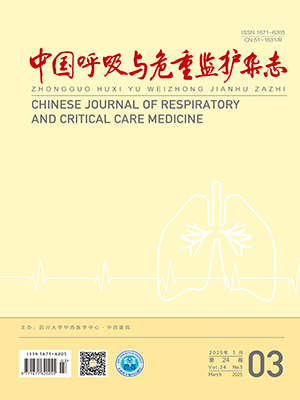Objective To explore the clinical features of microscopic polyangiitis ( MPA )complicated with pulmonary involvement in comparison with idiopathic pulmonary fibrosis ( IPF) .
Methods Clinical and laboratory data of 27 patients with MPA and 56 patients with IPF in the Drum Tower Hospital from2006 to 2010 were analyzed retrospectively. The differences were compared between the MPA patients with pulmonary fibrosis manifestation ( MPA/PF patients) and those without pulmonary fibrosis manifestation
( MPA/NPF patients) , and the IPF patients.
Results The differences between the MPA/PF patients and the MPA/NPF patients were rarely found in terms of respiratory symptoms, ANCA positive rate, and multiple organ involvement, but the proportions of suffering severe renal damage and severe pulmonary hypertension in the MPA /PF patients were relatively high ( P lt; 0. 05) . Furthermore, there were significant differences between the MPA/PF patients and the IPF patients in terms of dyspnea, incidence of renal damage, ANCA positive rate, incidence of serious pulmonary hypertension, and multiple organ involvement. The IPF patients were more prone to develop dyspnea while MPA patients were more prone to develop renal damage, high ANCA positive rate, high incidence of serious PAH and multiple organ involvement, such as rush, joint pain,weight loss, fever and gastrointestinal symptoms ( P lt;0. 05) .
Conclusions When patients have respiratory symptoms complicated with renal failure, skin damage, fever, and joint pain, the diagnosis of MPA should be considered. For patients who were clinically suspected as interstitial pneumonitis or pulmonary fibrosis,measurement of serumantineutrophil cytoplasmic antibodies and creatinine test are essential for diagnosis.
Citation: CHEN Lulu,ZHANG Deping,MIAO Liyun.. Clinical Features of Microscopic Polyangiitis with Pulmonary Involvement in Comparison with Idiopathic Pulmonary Fibrosis. Chinese Journal of Respiratory and Critical Care Medicine, 2011, 10(5): 437-441. doi: Copy
Copyright © the editorial department of Chinese Journal of Respiratory and Critical Care Medicine of West China Medical Publisher. All rights reserved




